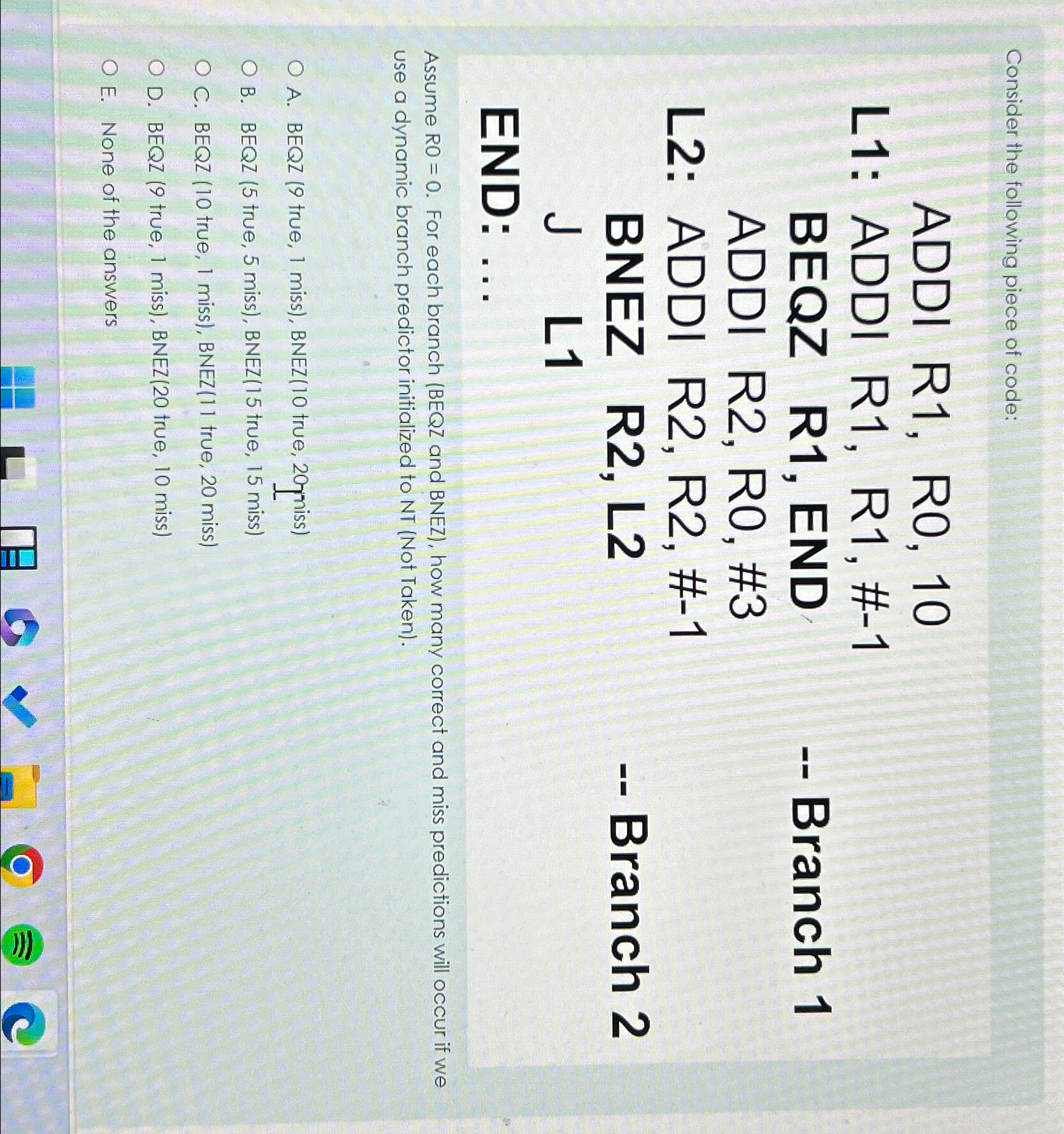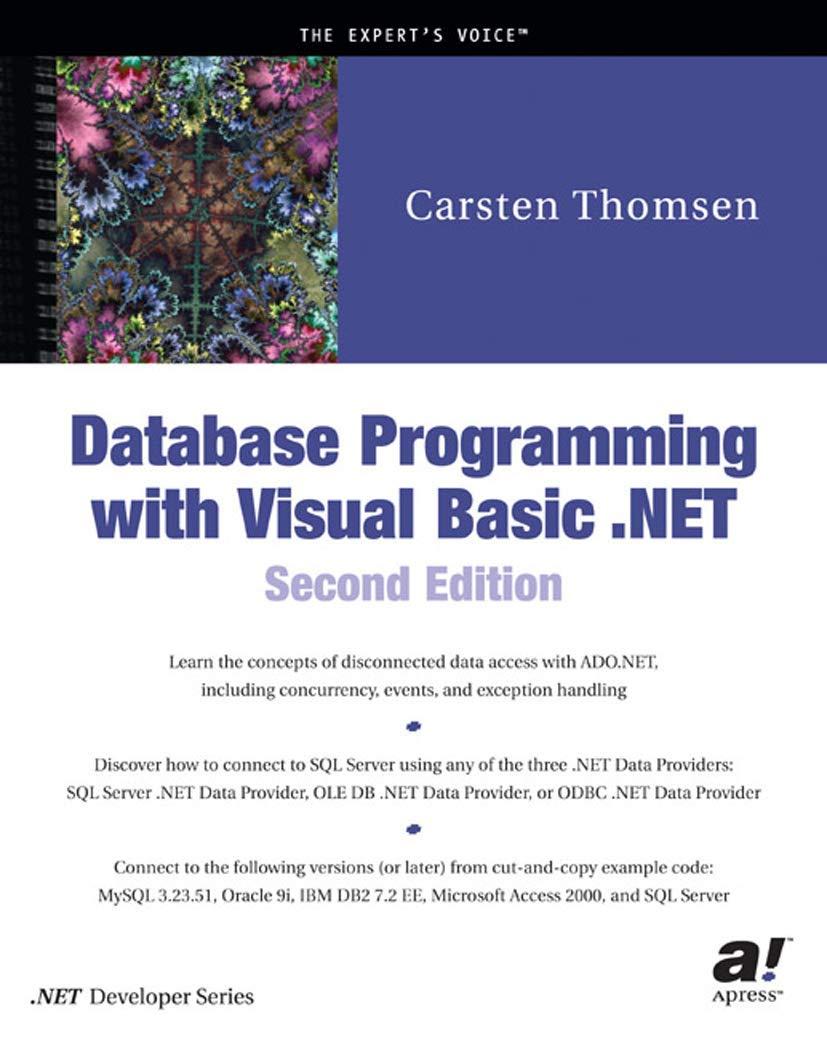Answered step by step
Verified Expert Solution
Question
1 Approved Answer
Consider the ADDI R 1 , R 0 , 1 0 L 1 : ADDI R 1 , R 1 , # - 1 BEQZ
Consider the
ADDI R R
L: ADDI R R #
BEQZ R END
Branch
ADDI R R #
L: ADDI R R #
BNEZ R L
Branch
J L
END:
use a dynamic branch predictor initialized to NT Not Taken
BEQZ true, miss BNEZ true, miss
BEQZ true, miss BNEZ true, miss
BEQZ true, miss BNEZ true, miss
None of the answers

Step by Step Solution
There are 3 Steps involved in it
Step: 1

Get Instant Access to Expert-Tailored Solutions
See step-by-step solutions with expert insights and AI powered tools for academic success
Step: 2

Step: 3

Ace Your Homework with AI
Get the answers you need in no time with our AI-driven, step-by-step assistance
Get Started


